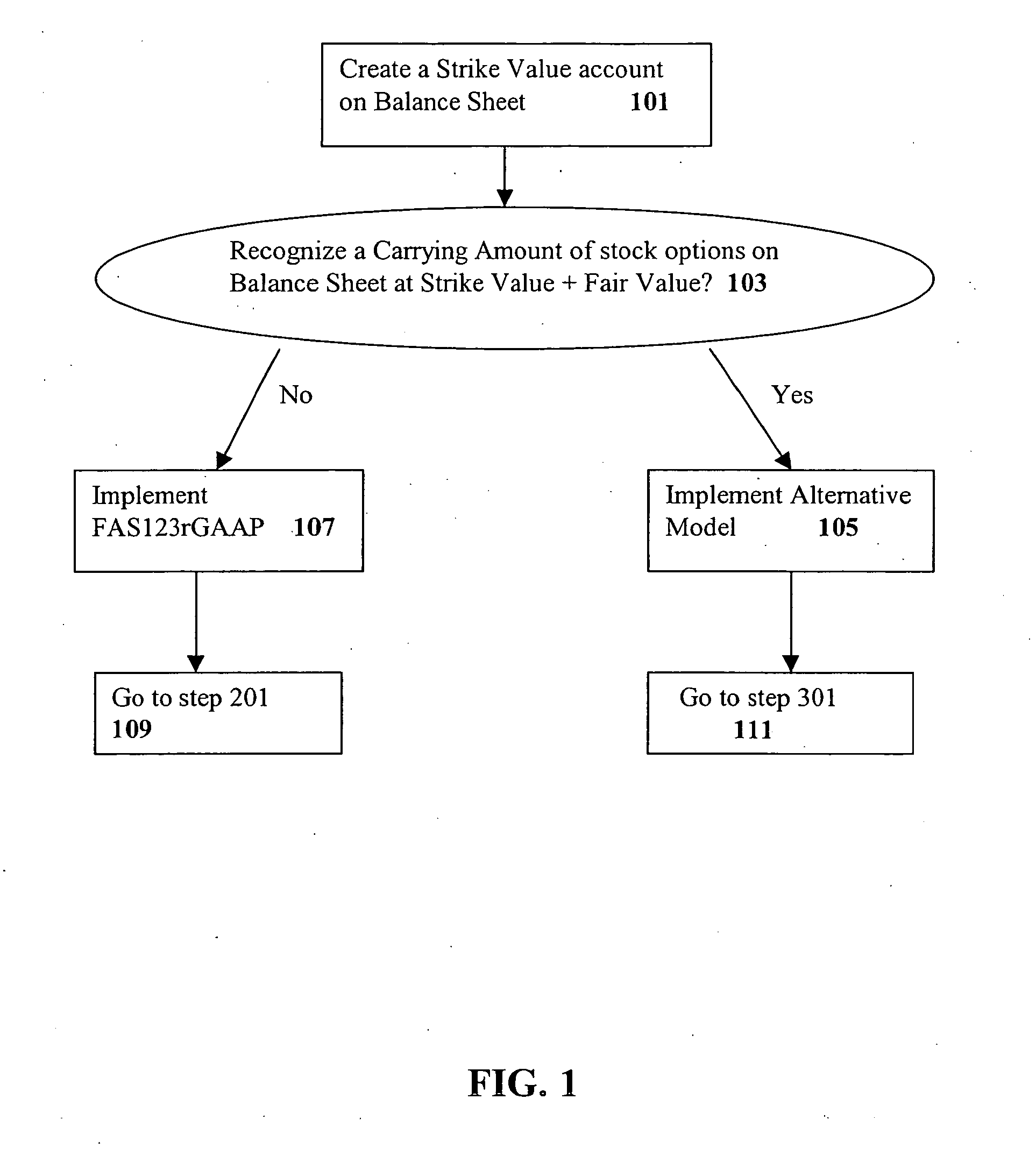ESO compensation schemes have proven especially controversial in settings where accounting is manipulated and so share prices are incorrect since ESO compensation are indexed to share prices.
Accounting for ESOs is controversial.
It is controversial both because of the underlying behavior, compensation practices, and the nature and technical attributes of the proposed accounting for this behavior.
In fact, the financial accounting for ESOs is one of the most vexing problems to accounting regulators in the United States.
As a result the regulatory
community, in particular, has taken the position that the part of employees' compensation represented by the exercise of ESOs is (1) not reported transparently, (2) not properly signaled in the GAAP accounting
system that prevailed through the late 1990s and (3) always a late surprise when the compensation is eventually reported.
In essence, there is nothing in the accounts that helps an informed reader estimate the ESO compensation until the contracts are exercised.
That focus, ESO expensing, has resulted in an incomplete and possibly erroneous accounting solution that is a mandatory component of GAAP in later 2005 under FAS123r.
“ESO expensing” has left many of these three items, and other items as well, unspeficied or specified in a manner that generates controversy, inconsistency or possible error.
ESOs have been difficult to comprehend because they are complex contracts: they are long-dated, or forward position in a call option that takes the form of an American call as of the vesting date and from the issuing entity's point of view is a short, or written, option position.
Since the option is a written contract, the economic benefit from the contract can only flow to the option holder and is experienced as a cost by the option writer.
A proposal to place stock options on the balance sheet and
record their cost in Earnings as a reduction to Income met in the mid 1990s with unprecedented Congressional resistance in part because of its expected negative
impact on the high tech industries.
However, the recent spate of accounting scandals has brought into focus the concerns of former SEC Chairman Arthur Levitt who stated in his 1998 speech at NYU, “The Numbers Game,” that the pervasiveness of accounting choice and manipulation was posing a significant challenge to perceptions of accounting quality in the United States.
The significant and pervasive level of Earnings manipulation that has been documented in numerous accounting scandals since the 1998 Levitt space introduces a new controversy: if Earnings are low quality, then the regulatory goals intended to be met by the use of Earnings to
record the cost of ESOs may be confounded by further manipultation (including manipulation of the ESO accounting itself), have little purgative effect, and result in less, rather than more, transparency.
However, the American accounting system has been slow to issue a standard requiring the expensing of stock options through Earnings.
C. In fact, sophisticated financial
engineering can exacerbate earnings manipulation through stock option contracts: evidence has surfaced in the business press that early adopters of stock option expensing are now generating unusually low expense charges by carefully choosing low volatility assumptions, high out-of-the-money stock prices (e.g. the recent IBM announcement) or altered contract terms, resulting in a decrease in the use of the stock options.
E. Stock options' expensing is urged by investors who fear that stock options result in
dilution; however the stock options proposals now before the FASB do not permit stock option accounting to articulate against other accounting variables that are stock being held in the form of treasury shares).
The simple policy statement has fueled the ESO controversy: fair value as an accounting panacea is less powerful and sometimes unworkable if the underlying fair value methodology has not been accepted or cannot be readily audited; the transparency produced by fair value accounting does not exist if the reader of the financial statements do not have the requisite knowledge to understand the underlying financial
engineering, and while fair value accounting for a financial instrument lends itself to reporting completeness with respect to the financial instrument, it cannot assure complete treatment of the underlying management behavior that causes the instrument to be used and or valued.
However, since it is a transitional step with many exceptions and special applications it introduces as many inconsistencies as improvements.
This analysis is limited to the principal choices permitted by the proposed accounting model.
The accounting for stock options can lead most financial statement readers to wonder how a liability and expense can result in a cash inflow when the options are settled.
It takes quite a bit of financial
engineering to make this counterintuitive link.
This is quite a “sharp pencil” approach to a difficult concept, and not entirely correct.
There are at least two difficulties with this notion which have been documented in the continued controversy about ESOs: the notion of opportunity cost and the
confusion when costs relate to asset acquisition rather than an Earnings event.
It is also the case if the costs are unrealized and potentially reversible.
FAS123r's expensing of stock options amounts to expensing of Time Value which is an opportunity cost.
For the CPA, the challenge is to value yet another complex derivative and to establish an audit framework for it.
Stock options are more complicated than other derivatives due to structure and markets.
While there are numerous ways to value options (with the most widely accepted model being Black-Scholes) these valuation models do not lend themselves easily to the accountant's model for an option.
 Login to View More
Login to View More  Login to View More
Login to View More 


